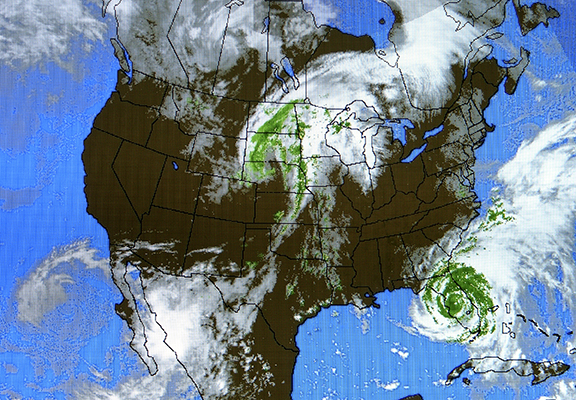El Niño & La Niña: What’s in Store for Nebraska in 2016?

One can analyze interest rates, foreign economies, grain supplies, and input costs all day long, but when it comes to farming, in the end, the old adage is true: It all depends on the weather. As Nebraska farmers plow through the drifts left by Winter Storm Kayla, they’re already thinking about planting season just around the corner, and wondering just what other weather phenomenon may be in store this growing season.
Weather experts continue to talk about the current influences of the strongest El Niño weather pattern on record since 1997. El Niño is the term used when equatorial-region Pacific Ocean temperatures reach a level of 0.5 degrees Celsius above normal for a sustained period of at least several months. In an El Niño year, those in the central section of the US can expect warmer than average temperatures combined with above average precipitation.
The National Oceanic and Atmospheric Administration (NOAA) recently released their outlook for January – March 2016, in terms of expected temperature and precipitation trends. Both of the NOAA’s trend maps reflect seasonal changes that have been found alongside strong El Niño’s of the past, although weather experts point out other numerous factors that influence weather, and caution that these are merely a reflection of past averages.
That being said, should 2016’s strong El Niño influence continue, Nebraska growers can expect a warmer temperature trend and some extra precipitation through March. According to the recently released NOAA weather numbers, the northern tier of the country has a likely chance of seeing temperatures warmer than average. The areas that have the best chances of seeing wetter than normal conditions are in the south and southern half of the plains. For Nebraska farmers, this could mean getting in the fields sooner, though too much precipitation could hinder that work to some extent.
However, as always, other climatologists are seeing indications that the El Niño pattern could rapidly reverse to a strong La Niña pattern beginning in April. Kyle Tapley, senior agricultural meteorologist for MDA Weather Services says that several models now show full-fledged La Niña conditions by the summer.
According to sources at Agweb.com, the overall chance of a La Niña event increases to 40 percent beginning in August and continuing through October of 2016. This could be significant because La Niña tends to bring hotter, drier weather during the growing season, potentially resulting in less favorable growing conditions for grain crops. While no one wants to contend with a lack of precipitation during the summer, the increased likelihood of improved grain prices as a result of potential drought conditions and a significant overall decrease in supply would go a long way to salve those wounds.
Until then, farmers are watching the weather models closely, and beginning to prepare for the 2016 growing season with these things in mind. UFARM offers a full range of Nebraska land management services, including real estate sales, rural property appraisals, consultations and crop insurance. UFARM has operated in Nebraska since the early 1930’s. Contact us today!
Sources consulted: Anderson, Bryce. “El Niño Looms Over 2016 Crop Season.” DTN Progressive Farmer. DTN. 04 Jan. 2016. Web. 04 Feb. 2016.Potter, Ben. “The Transition to La Niña Could Be Speeding Up.” Agweb.com. Farm Journal, Inc. 26 Jan. 2016. Web. 04 Feb. 2016. Sugden, Brad. “Strong El Niño Continues to Influence Heartland Weather.” WOWT.com. WOWT News Omaha. 18 Dec. 2015. Web. 04 Web. 2016.

